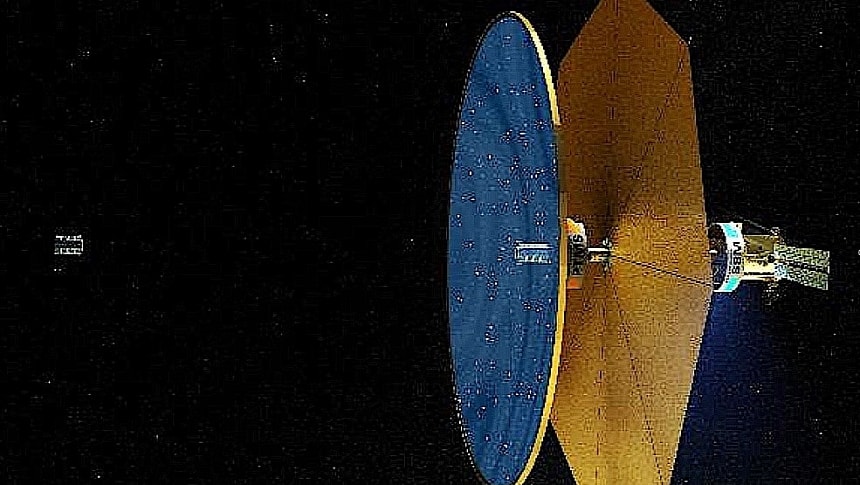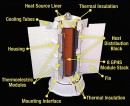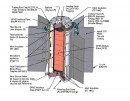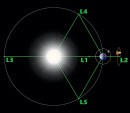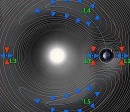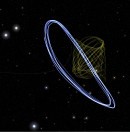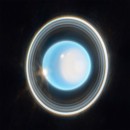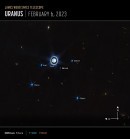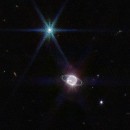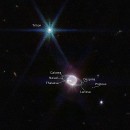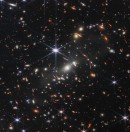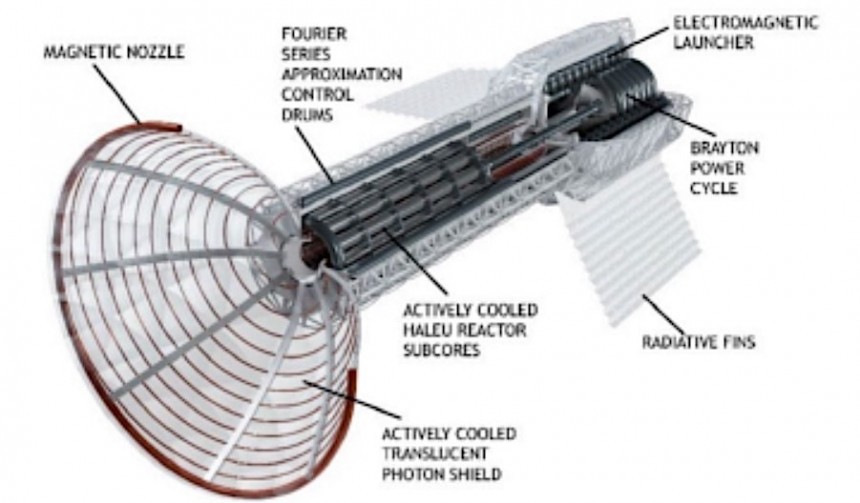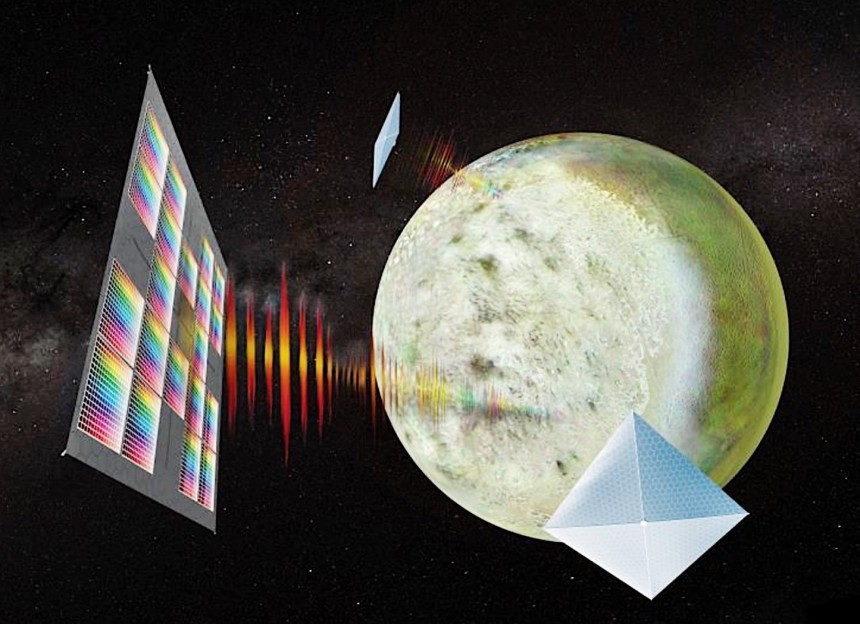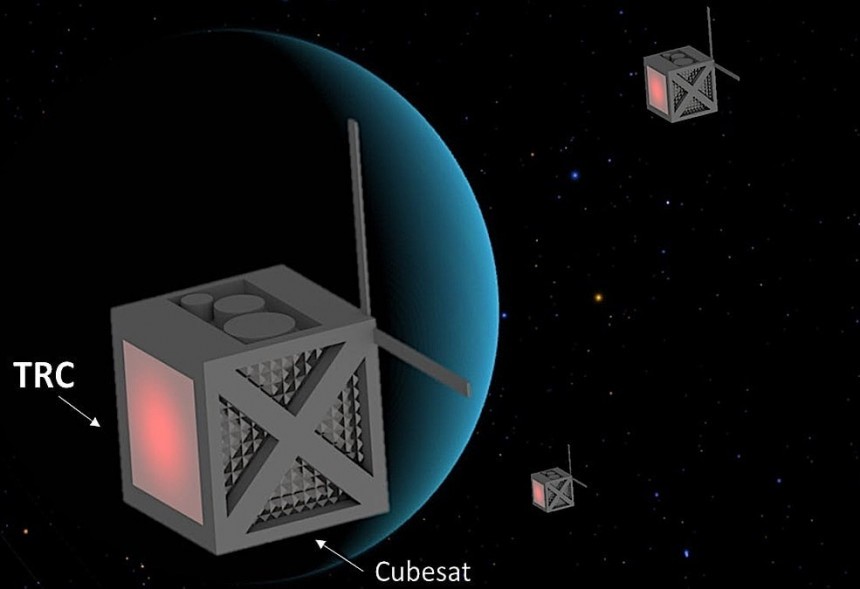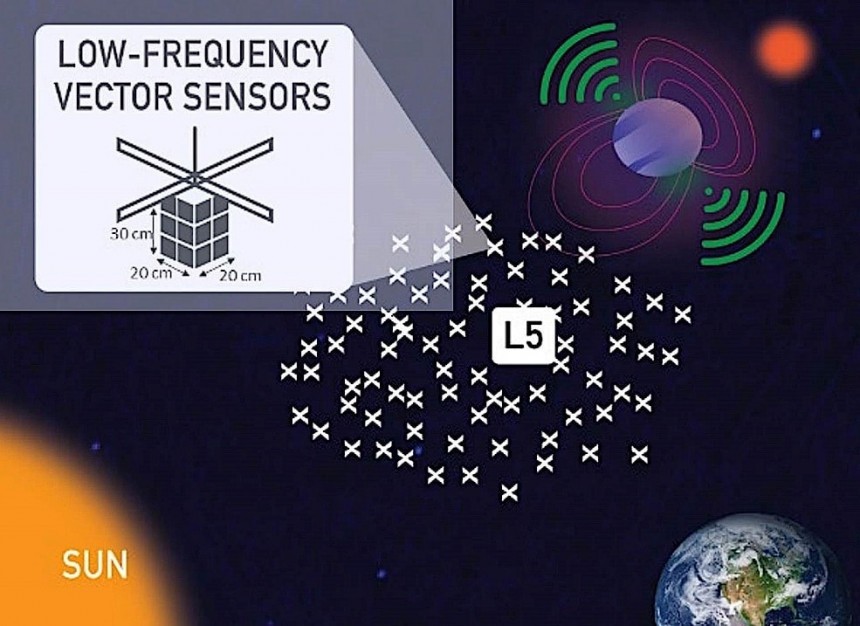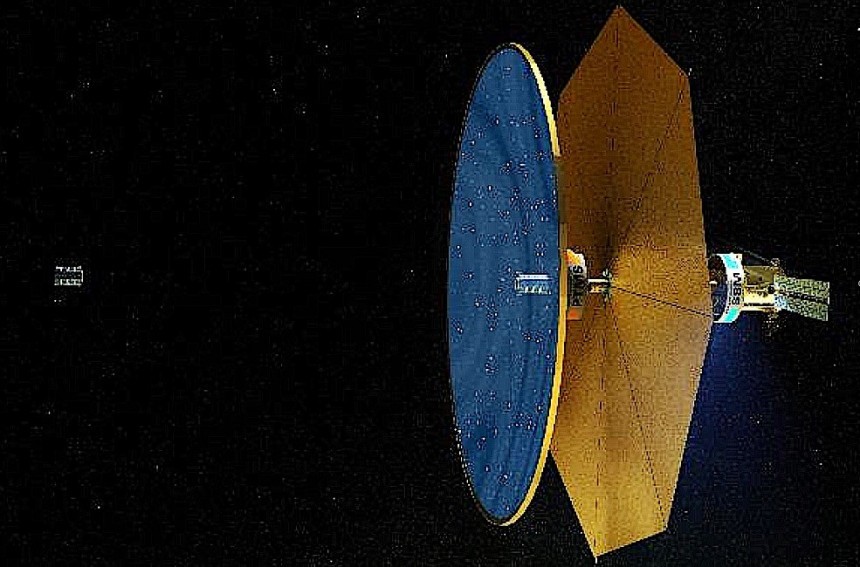At the beginning of each year American space agency NASA announces something called the Innovative Advanced Concepts (NIAC) awards, the culmination of a program meant to "nurture visionary ideas that could transform future NASA missions." And boy, does it deliver on that statement!
The awards are more than just a simple recognition of innovative technologies humans imagine for the future of space exploration. Once a project gets accepted, it gets partially funded by NASA, moving one step closer to becoming a reality.
Each year dozens of projects make it to the list, but NIAC, like many other programs of this caliber, comes in phases, and not all these ideas make it through to the other end. Many, in fact, are forgotten, despite appearing revolutionary at first sight.
From time to time, though, NASA is so impressed by some of them that it rapidly jumps on board to support them further. And that's exactly what the agency did at the beginning of May with six projects initially presented during previous NIAC awards. Initially awarded Phase I backing, these "six visionary concept studies" have just been cleared for additional funding of up to $600,000 over the next two years, to be further matured.
Not all of them will probably make them to Phase III, but the ones that do have a good chance of becoming an actual NASA mission in the not-so-distant future. A perfect reason, then, for us to have a closer look at them.
Space exploration agencies have always dreamed (with no success so far) of means of propulsion capable of generating a high specific impulse and high thrust. That's because both these things are essential for ships to reach distant destinations, with humans and cargo on board, in a reasonable amount of time.
The Pulsed Plasma Rocket (PPR) proposal from Howe Industries' Brianna Clements promises to be exactly that. The idea builds on previous work in the field of pulsed fission-fusion but comes in a smaller package and should be a tad more affordable.
On paper, the system should be capable of generating a massive 100,000 N of thrust, and a specific impulse of 5,000 seconds. That's more than enough to push a fully loaded spacecraft all the way to Mars in just a couple of months, a far cry from the nine months conventional means would require.
Using the money from NIAC Phase II, Howe Industries plans to optimize the engine design and squeeze an even higher specific impulse from it, and perform proof-of-concept experiments on the PPR's main components. Finally, a ship design for human missions to Mars should be presented.
NASA's own people are allowed to take part in NIAC, and that's exactly what Goddard Space Flight Center Mahmooda Sultana did when she entered her idea for a ScienceCraft for Outer Planet Exploration.
SCOPE for short, the project aims to develop spacecraft powered by solar sails the likes of which the world has never seen. More to the point, we're talking about sails that feature a printed quantum dot-based spectrometer.
This design is revolutionary in the way that it will allow "unprecedented parallelism and throughput of data collection, and rapid travel across the solar system." How rapid? Imagine reaching Uranus in less than 2 years and Neptune in less than 3 years – that's half the time current spaceships need to reach the same destination.
The workings of the SCOPE idea were not detailed for the public, but NASA was impressed enough to fund it some more. It's unclear where the idea will lead in Phase II.
As the name clearly says, this idea has to do with a "revolutionary power source for missions to the outer planets." It was proposed by Stephen Polly from the Rochester Institute of Technology in Rochester, New York, and it got accepted into Phase II of the NIAC program thanks to some revolutionary things it promises.
Just like the multi-mission radioisotope thermoelectric generator (MMRTG) that presently powers the Perseverance rover on Mars, this generator relies on heat generated by a radioisotope to power things.
Unlike the MMRTG, which at 25 inches (64 cm) in diameter and 94 pounds (45 kg) is quite big and would be completely unsuitable for use on a small spacecraft, the Radioisotope Thermoradiative Cell Power Generator could fit right in.
Because it uses thermoradiative and photovoltaic cells to turn that heat into electricity, the hardware could potentially be scaled down by as much as three times compared to the one on the Perseverance, making it ideal to fit on smaller space explorers.
The GO-LoW is the brainchild of Mary Knapp from the Massachusetts Institute of Technology (MIT) and it's meant to solve an engineering challenge that has troubled scientists for ages: scanning the "the low-frequency radio sky" in search for galactic wonders and, who knows, maybe even aliens. The low-frequency radio sky means frequencies between 100 kHz and 15 MHz, where the secrets of the Universe's electromagnetic radiation can be heard.
The idea is as simple as it is innovative. It relies on a massive network of CubeSat satellites being placed in space and made to work like a single telescope. This approach would remove the need to build a single, enormous space telescope that could scan for low-frequency signals.
The CubeSat telescope would also be capable of looking at planets located at over 16 light years from our planet.
His imagination fueled by the continuous expansion of our space exploration plans, many of which target the Moon, Ethan Schaler from the Jet Propulsion Laboratory came up with the idea of a railway-like transport system to be deployed up there - enter the Flexible Lvitation on a Track (FLOAT).
I say railway-like because the entire idea relies on a flexible film track being laid on the ground. The film would have three layers to serve different purposes: graphite for diamagnetic levitation, flex-circuit to generate the electromagnetic thrust and provide forward motion, and a solar panel layer for extra energy requirements.
Platforms loaded with regolith mined on the surface would float above this track, moving to where they're needed. The platforms themselves would be different in size and would autonomously move their cargo at speeds of 0.5 meters per second.
The size of the telescopes we send into space is crucial to their capabilities. The larger they are, the deeper and farther into the Universe they can look, unraveling mysteries we probably didn't even know existed.
But our current technological level only allows us to sent into space telescopes whose mirrors are at most 33 feet (10 meters) – we've never actually done that, as the largest space mirror, the one on the James Webb Space Telescope (JWST), is only 21 feet (6.5 meters) across.
Yet the Fluidic Telescope (FLUTE) idea proposed by NASA Ames Research Center's Edward Balaban is a staggering 164 feet (50 meters). How is this possible?
The simple answer is the thing would be assembled in space by taking advantage of the way fluids naturally behave in microgravity. Up there, droplets tend to take the most energy-efficient shape, which is a sphere, and cling to surfaces nearby.
Using this knowledge, it wouldn't be impossible to use fluids and a circular frame to create a huge telescope. The stuff would spread, under the laws that govern it in space, all over the gigantic frame, eventually forming a fluid-covered surface.
Said surface would then be forced to take a concave shape over the frame, becoming reflective and potentially a huge telescope.
Each year dozens of projects make it to the list, but NIAC, like many other programs of this caliber, comes in phases, and not all these ideas make it through to the other end. Many, in fact, are forgotten, despite appearing revolutionary at first sight.
From time to time, though, NASA is so impressed by some of them that it rapidly jumps on board to support them further. And that's exactly what the agency did at the beginning of May with six projects initially presented during previous NIAC awards. Initially awarded Phase I backing, these "six visionary concept studies" have just been cleared for additional funding of up to $600,000 over the next two years, to be further matured.
Not all of them will probably make them to Phase III, but the ones that do have a good chance of becoming an actual NASA mission in the not-so-distant future. A perfect reason, then, for us to have a closer look at them.
Pulsed Plasma Rocket (PPR)
The Pulsed Plasma Rocket (PPR) proposal from Howe Industries' Brianna Clements promises to be exactly that. The idea builds on previous work in the field of pulsed fission-fusion but comes in a smaller package and should be a tad more affordable.
On paper, the system should be capable of generating a massive 100,000 N of thrust, and a specific impulse of 5,000 seconds. That's more than enough to push a fully loaded spacecraft all the way to Mars in just a couple of months, a far cry from the nine months conventional means would require.
Using the money from NIAC Phase II, Howe Industries plans to optimize the engine design and squeeze an even higher specific impulse from it, and perform proof-of-concept experiments on the PPR's main components. Finally, a ship design for human missions to Mars should be presented.
ScienceCraft for Outer Planet Exploration (SCOPE)
SCOPE for short, the project aims to develop spacecraft powered by solar sails the likes of which the world has never seen. More to the point, we're talking about sails that feature a printed quantum dot-based spectrometer.
This design is revolutionary in the way that it will allow "unprecedented parallelism and throughput of data collection, and rapid travel across the solar system." How rapid? Imagine reaching Uranus in less than 2 years and Neptune in less than 3 years – that's half the time current spaceships need to reach the same destination.
The workings of the SCOPE idea were not detailed for the public, but NASA was impressed enough to fund it some more. It's unclear where the idea will lead in Phase II.
Radioisotope Thermoradiative Cell Power Generator
Just like the multi-mission radioisotope thermoelectric generator (MMRTG) that presently powers the Perseverance rover on Mars, this generator relies on heat generated by a radioisotope to power things.
Unlike the MMRTG, which at 25 inches (64 cm) in diameter and 94 pounds (45 kg) is quite big and would be completely unsuitable for use on a small spacecraft, the Radioisotope Thermoradiative Cell Power Generator could fit right in.
Because it uses thermoradiative and photovoltaic cells to turn that heat into electricity, the hardware could potentially be scaled down by as much as three times compared to the one on the Perseverance, making it ideal to fit on smaller space explorers.
Great Observatory for Long Wavelengths (GO-LoW)
The idea is as simple as it is innovative. It relies on a massive network of CubeSat satellites being placed in space and made to work like a single telescope. This approach would remove the need to build a single, enormous space telescope that could scan for low-frequency signals.
The CubeSat telescope would also be capable of looking at planets located at over 16 light years from our planet.
Flexible Levitation on a Track (FLOAT)
I say railway-like because the entire idea relies on a flexible film track being laid on the ground. The film would have three layers to serve different purposes: graphite for diamagnetic levitation, flex-circuit to generate the electromagnetic thrust and provide forward motion, and a solar panel layer for extra energy requirements.
Platforms loaded with regolith mined on the surface would float above this track, moving to where they're needed. The platforms themselves would be different in size and would autonomously move their cargo at speeds of 0.5 meters per second.
Fluidic Telescope (FLUTE)
But our current technological level only allows us to sent into space telescopes whose mirrors are at most 33 feet (10 meters) – we've never actually done that, as the largest space mirror, the one on the James Webb Space Telescope (JWST), is only 21 feet (6.5 meters) across.
Yet the Fluidic Telescope (FLUTE) idea proposed by NASA Ames Research Center's Edward Balaban is a staggering 164 feet (50 meters). How is this possible?
The simple answer is the thing would be assembled in space by taking advantage of the way fluids naturally behave in microgravity. Up there, droplets tend to take the most energy-efficient shape, which is a sphere, and cling to surfaces nearby.
Using this knowledge, it wouldn't be impossible to use fluids and a circular frame to create a huge telescope. The stuff would spread, under the laws that govern it in space, all over the gigantic frame, eventually forming a fluid-covered surface.
Said surface would then be forced to take a concave shape over the frame, becoming reflective and potentially a huge telescope.
